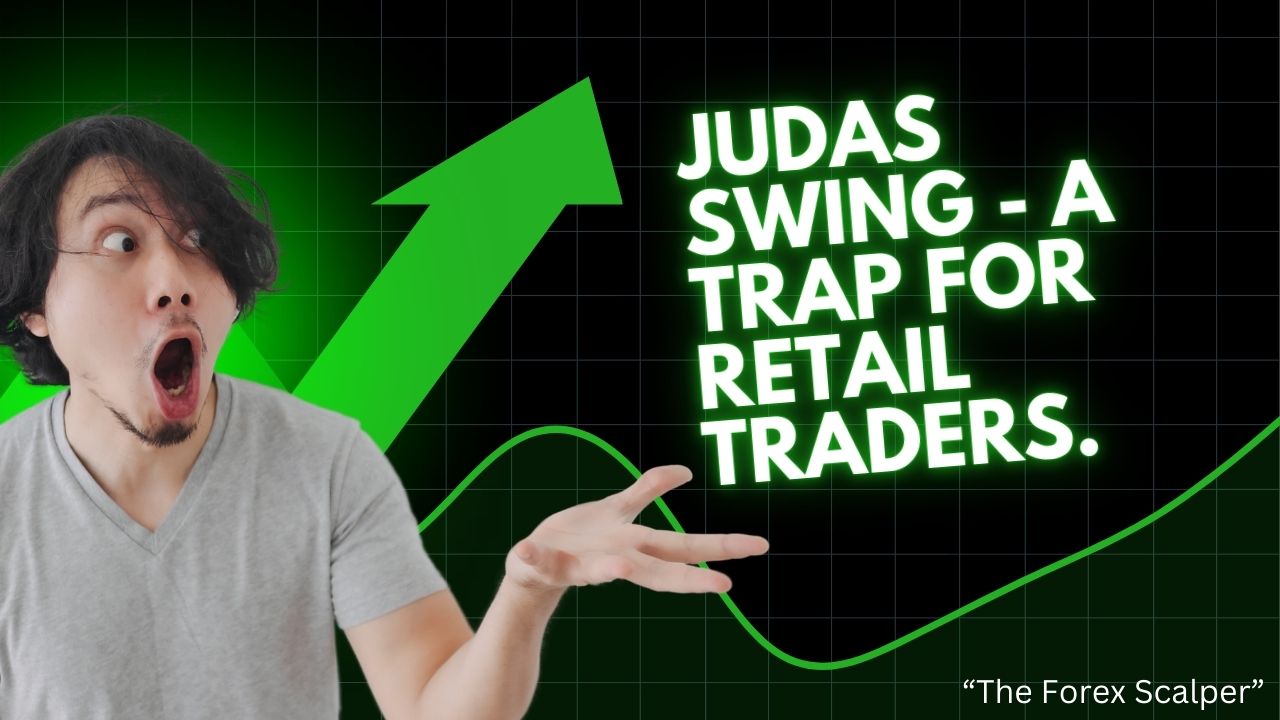Understanding the Judas Swing: A Detailed and Educational Guide
The “Judas Swing” is a critical concept within the ICT (Inner Circle Trader) trading methodology. It refers to a manipulative price movement designed to trap retail traders before the market moves in the intended direction. By understanding this concept, traders can avoid falling victim to false moves and align their strategies with institutional flows.
In this comprehensive guide, we will break down what the Judas Swing is, explain how it works, and discuss how you can incorporate it into your trading strategy. Furthermore, we will highlight valuable resources, such as the Order Flow Trading Masterclass, to enhance your understanding of market manipulation and order flow dynamics. By combining these insights, you can develop a more informed and effective trading approach.
What is a Judas Swing?
A Judas Swing is a deliberate price movement designed to:
- Manipulate Retail Traders: Trigger stop-loss orders or entice traders into taking premature positions.
- Create Liquidity: Generate the liquidity necessary for institutional traders to place large orders.
- Signal the True Direction: After the initial manipulation, the market often reverses and moves in the opposite direction, aligning with the smart money’s intentions.
Named after the biblical story of betrayal, the Judas Swing symbolizes how the market “betrays” retail traders by luring them into false moves. Consequently, this concept is central to the ICT Judas Swing strategy, as it focuses on identifying and exploiting these manipulative moves.
Characteristics the Swing
Understanding the key features of a Judas Swing is essential for identifying it in real-time. These include:
- Occurs During Key Trading Sessions
- Typically seen at the London Open or New York Open, when liquidity is high.
- Institutions use the influx of retail orders during these times to execute their manipulative strategies.
- Targets Liquidity Zones
- Commonly aims at areas of clustered stop-loss orders or pending orders near swing highs or lows.
- These liquidity zones act as magnets for the Judas Swing.
- Sharp and Sudden Movement
- Begins with a sharp price move in one direction to entice traders or trigger stops.
- Often followed by an immediate reversal that aligns with the true market trend.
- Aligned with Institutional Goals
- Designed to provide liquidity for institutional players to execute large buy or sell orders.
- Helps institutions maintain stealth while entering or exiting positions.
How to Identify a Judas Swing
1. Analyze the Time of Day
- Focus on key trading sessions, particularly the first hour of the London and New York sessions.
- Use tools like economic calendars to monitor high-impact news releases, which can amplify the Judas Swing.
2. Look for Liquidity Zones
- Mark areas of clustered stop-loss orders above recent highs or below recent lows.
- Identify psychological price levels (e.g., round numbers) that attract retail orders.
3. Observe Price Action
- Look for a rapid price move toward a liquidity zone, followed by a sharp reversal.
- Confirm the reversal with tools like candlestick patterns or volume spikes.
4. Use Order Flow Analysis
- Leverage order flow tools to monitor buying and selling activity during the swing.
- Look for imbalances that indicate institutional participation.
How to Trade the Judas Swing
1: Prepare Your Chart
- Mark key liquidity zones and significant support or resistance levels.
- Highlight the opening range of the London or New York session.
2: Wait for Confirmation
- Allow the Judas Swing to play out before entering a trade.
- Look for a sharp reversal after the initial false move.
3: Enter the Trade
- Enter in the direction of the reversal, ensuring that the price aligns with the overall market structure.
- Use tools like the Order Flow Trading Masterclass to refine your entries.
4: Manage Risk
- Place stop-loss orders just beyond the liquidity zone to minimize risk.
- Set realistic take-profit levels based on market structure or average daily range.
Example of a Judas Swing in Action
Scenario
- The market is in a downtrend, and the New York session opens.
- Price spikes upward to a previous swing high, triggering stop-loss orders.
- After hitting the liquidity zone, price reverses sharply and resumes the downtrend.
Trade Setup
- Wait for the reversal candle or confirmation through order flow analysis.
- Enter a sell trade below the liquidity zone.
- Set your stop loss just above the swing high and target the next significant support level.
Tools and Resources to Master the Judas Swing
Order Flow Trading Masterclass
Order flow analysis is essential for understanding institutional participation during a Judas Swing. This course will teach you:
- How to use order flow tools to detect smart money activity.
- Techniques for confirming Judas Swings with volume and delta analysis.
- Strategies to refine your entries and exits with precision.
Start mastering order flow today: Order Flow Trading Masterclass
Supply & Demand Trading Masterclass
This course complements your understanding of liquidity zones, helping you:
- Identify high-probability trading zones.
- Combine supply and demand analysis with Judas Swing setups.
Enroll now: Supply & Demand Trading Masterclass
Element 88 Masterclass
Designed for traders seeking to excel in prop firm challenges, this course includes:
- Strategies for trading manipulation patterns like the Judas Swing.
- Risk management techniques tailored for high-probability setups.
Learn more: Element 88 Masterclass
Conclusion
The Judas Swing is a powerful concept that, when understood, can transform your trading approach. By recognizing this manipulation pattern, you can align with institutional moves instead of being trapped by them. Tools like order flow analysis and courses such as the Order Flow Trading Masterclass can enhance your ability to identify and trade Judas Swings effectively.
Whether you are interested in mastering the ICT Judas Swing or developing a comprehensive ICT swing trading strategy, education and practice are key. Ready to take your trading to the next level? Explore these educational resources and start mastering advanced trading concepts today.









